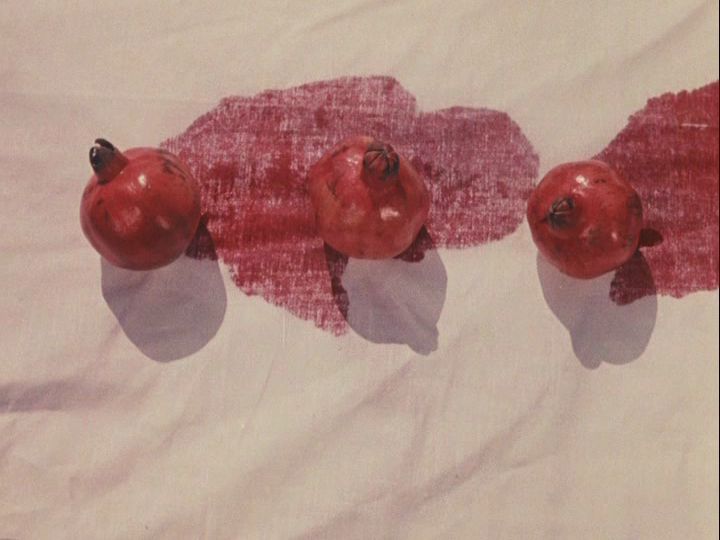New York Film Festival isn't just about the new. Here is Glenn on the restoration of Sergei Parajanov's 1968 avant-garde classic 'The Color of Pomegranates'.
Conversing at a bar last Friday night after the premiere NYFF screening of David Fincher’s Gone Girl, I mentioned to Nathaniel that I knew what shot I would choose for “Hit Me With Your Best Shot”. I’m not sure about you, but I frequently find myself attempting to work out what my selection would be when I watch a movie. As I’ve mentioned previously, I am very much into the visual and formal aspects of a film so whether it’s a cheap horror movie or a prestige epic my eyes attempt to scope these things out.

Which brings me to the restoration of Sergei Parajanov’s The Colour of Pomegranates (also known as Sayat Nova). This, quite frankly, is a film in which it would be impossible to find just one single piece of imagery to label the best. Would it be the juices of a carved pomegranate soaking through a piece of white linen? How about the moment when a large woolen rug is being warmed in the sun atop dome-like structures? Or when a woman dressed in deep red garb lifts a veil in front of her eyes? Or the fluttering of a hundred books adorning the angular walls upon which a young boy lays? A shell, shimmer with mother of pearl, placed delicately on top of a woman’s breast? A foot placed parallel to a sprig of ripened red grapes? Sofiko Chiaureli with her face plastered white wearing a stunning tapestry-like dress and a headdress maid of leaves and flowers, a chicken mysteriously roosted on her shoulder? There are genuinely too many moments of virtuosic imagery on display to pick just one.
Inspired by the poems of Sayat Nova and subsequently banned in what was then the Soviet Union, The Colour of Pomegranates is likely the best film I’ll see at the entire festival. Yes, it’s nearly 50 years old, but there’s no statute of limitations on that. Bold in its avant-garde imagery, mesmerizing in its patience; at only 77 minutes it is well and truly an epic. A film about poetry that is in and of itself poetic. Himself surely inspired by fellow countryman Dziga Vertov amongst others, Parajanov’s film has inspired countless others. Tarsem Singh’s films - The Cell and The Fall especially - are indebted to the lush blend of natural landscapes and otherworldly design and fantastical artifice, while works by Federico Fellini, Madonna, Steven Klein, Peter Greenaway, Alejandro Jodorowsky and Ron Fricke all have clear references to its unconventional brilliance as well.

46 years after its debut, the film has been beautifully restored by Cineteca di Bologna/L’Immagine Ritrovata and The Film Foundation’s World Cinema Project, in association with the National Cinema Centre of Armenia and Gosfilmofond of Russia. It has played played Cannes, the Academy, Toronto (introduced by Martin Scorsese), and now New York Film Festival and is a must see. Whenever a film finds itself given a 4K make-over like this it suggests a significant blu-ray (hopefully Criterion) release is on the horizon and the more people able to see Parajanov’s stunning achievement in such high quality the better. On a big screen, however, it will blow your mind. A
The Colour of Pomegranates screens only once on Tuesday Oct 2 (6pm)